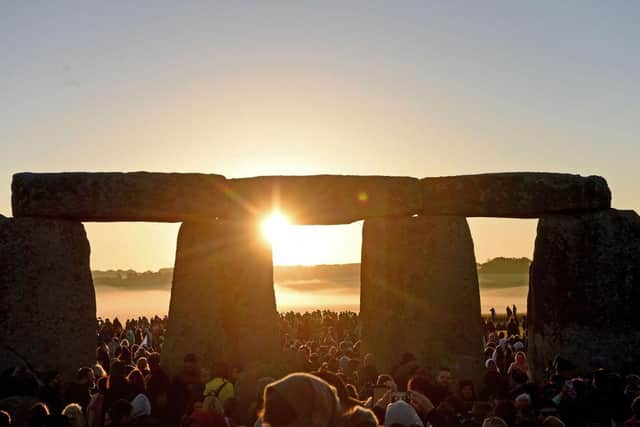When is the longest day of the year 2023? UK date of Summer Solstice, meaning and what happens at Stonehenge
and live on Freeview channel 276
The summer season has finally arrived in the UK and despite a rainy start, we are still in the middle of a heatwave. The start of the sunny season is officially marked by the summer solstice, otherwise known as the longest day of the year, which signals the start of brighter evenings.
Here’s when the event falls this year and how it is celebrated.
When is the longest day of the year in 2023
Advertisement
Hide AdAdvertisement
Hide AdIn the northern hemisphere, the summer solstice - also known as midsummer - takes place between 20 and 22 June every year, when the sun travels along its northernmost path in the sky.


The exact moment of the solstice is when the Earth is closest to the sun and this year it is due to fall on 21 June. The sun will rise at 4.43am and set at 9.21pm, meaning the UK will enjoy 16 hours and 42 minutes of daylight.
What happens during the summer solstice?
The summer solstice takes place when the Earth arrives at the point in its orbit where the North Pole is at its maximum tilt toward the sun and is directly above the Tropic of Cancer. This results in the longest day and shortest night of the calendar year, and marks the beginning of the astronomical summer, which ends with the autumn equinox on 22 or 23 September in the Northern Hemisphere.
The day signals the moment the sun’s path stops moving northward in the sky, with the days gradually becoming shorter afterwards as we move towards winter. However, the days won’t become noticeably shorter for a while, with the shortest day of the year not due until 21 December, known as the winter solstice.
Advertisement
Hide AdAdvertisement
Hide AdThere are two solstices each year, with one occurring in the winter and the other in the summer. During the winter solstice, the Earth's axis is tilted furthest away from the sun directly over the Tropic of Capricorn bringing only a few hours of daylight.
In the southern hemisphere the dates of the two solstices are reversed, with the winter solstice occurring on the same day in June and the summer solstice the same day in December.
How is the summer solstice celebrated?
Historically, the summer solstice used to take place between the planting and harvesting of crops, giving people who worked on the land time to relax. This is also the reason many people would traditionally get married in June, and why it is still a popular month for weddings.
The summer solstice has been seen as a significant time of the year in many cultures and inspired many festivals and midsummer celebrations over the years. In ancient Germanic, Slavic and Celtic tribes, pagans celebrated midsummer with bonfires and dancing. The Pagan festival of Litha also starts on the eve of the summer solstice, and celebrates the midsummer and the power of the sun god. According to Pagan folklore, evil spirits walk the Earth more freely on the solstice, so people wear protective garlands of herbs and flowers to ward them off.
Advertisement
Hide AdAdvertisement
Hide AdOther traditions include lighting bonfires, having picnics, watching the sun rise and Maypole dancing. Many people also visit Stonehenge on the summer solstice to see the sun rise at the heritage site. The rising sun only reaches the middle of the stones on one day of the year, when it shines on the central altar.
The sarsen stones, which were put up at the centre of the site in around 2500 BC, were carefully aligned to line up with the movements of the sun. English Heritage says: “Marking the movements of the sun was clearly important to the people who built Stonehenge, as they went to such enormous effort to carefully line up the monument.
“However, there is very little evidence as to what ceremonies might have taken place here; there are few clues from excavations within the stone circle that seem to have been kept clean and separate from everyday debris.
“We can imagine that people gathered at the monument to celebrate the midsummer and the midwinter, although only a few people would have been able to directly observe the important alignment.”
Comment Guidelines
National World encourages reader discussion on our stories. User feedback, insights and back-and-forth exchanges add a rich layer of context to reporting. Please review our Community Guidelines before commenting.